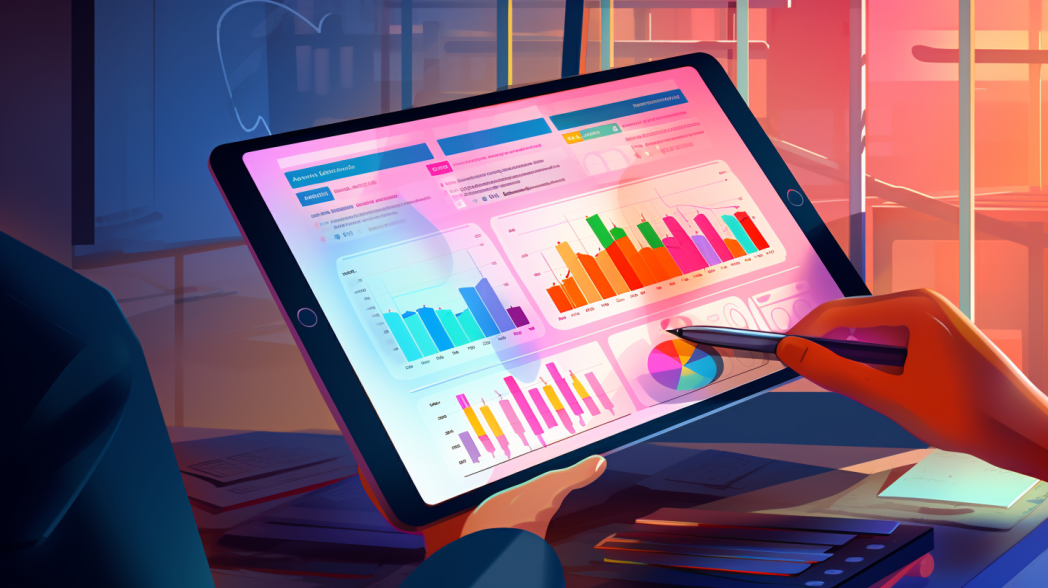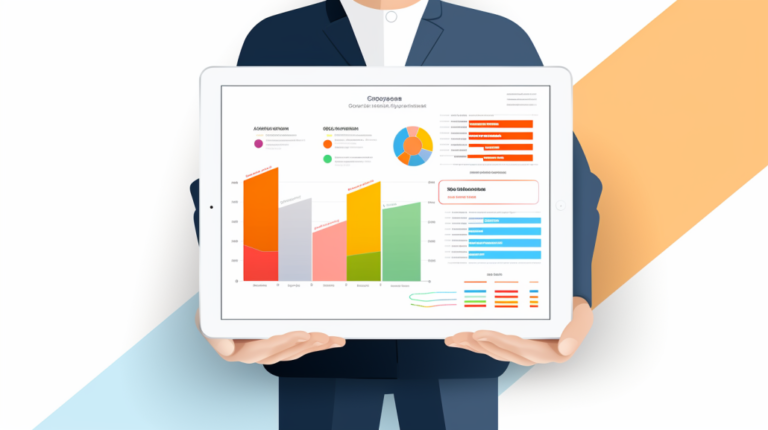Year-End Budget Review Best Practices

Ever feel like you’re just barely keeping your head above water when it comes to handling your year-end budget review? Trust me, I’ve shared the same headache, juggling those numbers and struggling to map out an effective strategy.
But there is a light at the end of the tunnel! This article will walk you through some failproof methods for managing your year-end budgets – say goodbye to shooting in the dark; hello accurate forecasting and intelligent distribution of resources.
Does that pique your interest? Well then buckle up, because we’re about to dive into some serious financial talk!
Key Takeaways
- Year – end budget reviews are important. They help check how the business did and what needs to change.
- Good budget reviews start with checking what we can do now. We must also see what we need to get better.
- The right software helps make our work easy. It helps track money in real time, so mistakes are few.
- Clear goals and smart planning let us save cash well. Regular checks keep all actions on point for success!
The Importance of Year-End Budget Review

A year-end budget review is a must. It checks how well the business did over the past twelve months. This check can shine a light on what worked and what didn’t. We see which areas need more money and where costs went too high.
The insight from this review guides the planning for next year’s budget. With this, it sets aims for spending, earnings, and saving in line with the company’s goals. The right mix of these three makes sure that not all savings are put in one place or planned project gets left out due to lack of funds.
The review also looks at ways to better cash flow setup as per Planergy Software guidelines. Keeping an eye on cash inflow and outflow aids in grasping economic uncertainty times plus supports continuous improvement as needed.
Viewing budgets yearly helps avoid financial frustration caused by wrong resource allocation or unexpected expenses later on like cloud-based mobile-friendly software updates.
So, carrying out end-of-the-year budget reviews keeps your business staying on track while also getting ready for any unforeseen situations looking ahead into next year!
Best Practices for Year-End Budget Review

For a successful year-end budget review, begin with reviewing existing capabilities and performing a needs analysis. Next, standardize your process using the right budgeting software to ensure seamless functionality.
Prioritize your business drivers based on their importance and impact on your organization’s bottom line. Strategically define and develop a new budget process that aligns with your operational goals.
Identify Key Performance Indicators (KPIs) as they provide invaluable insights into organizational performance. Implement your new budgeting process for an efficient financial system outflow in the coming period – but don’t stop there! It’s crucial to track performance over time while holding departments accountable for spending under their purview; this fosters responsible spending habits throughout all divisions of your corporation.
Lastly, aim for constant improvement of your budgeting processes – it’s not a static thing; evolving them regularly can enhance operational efficiency over time.
Review Existing Capabilities and Perform Needs Analysis

Starting a year-end budget review calls for two main steps. The first one is to look at what we can do now. This means reviewing existing abilities. We need to see what our strengths and areas for improvement are.
- Take note of all the tools we use for budgeting.
- Check how well our team knows those tools.
- See if there are any gaps or issues in how we use these tools.
- Note down what works well, and keep doing it.
- List down all the tasks needed for good budget planning.
- Check if our current ability covers all these tasks fully, partly or not at all.
- Ask folks who work with you on this for their ideas as well.
Standardize the Process with the Right Budgeting Software
Picking the right budgeting software is a big step. It makes the budget process simple and easy. You can track spending with it too. A good program will let you see where money is going in real time.
This helps avoid mistakes and keeps things neat and tidy. Programs like Planergy and Vena’s Budgeting Software are perfect for this job.
Prioritize Business Drivers
Business drivers are the heart of any firm. They must be top on your list in budget planning. These are the areas that bring money into the business and help it grow. We need to keep an eye on them all year round, not just at the end of a budget cycle.
It’s like being behind a car’s wheel steered towards success! By doing this, we can ensure our resources go to where they make us strongest. This is how smart firms save money and stay ahead of others!
Define and Develop a New Budget Process
Setting up a new budget process is key. I look at what worked and did not work in the past. Goals may change, so it’s smart to rethink how money gets spent. For this, I use a centralized planning software tool with AI-powered predictive analytics abilities for effective results.
It helps map out costs and where cuts can be made if needed. Keywords help get rid of guesswork! Clear goals are set from the start which makes successful budgeting easier. A fresh approach to how money moves around aids in stronger business growth too!
Identify Key Performance Indicators (KPIs)
We first have to list the key performance indicators (KPIs). These are ways we grade our success. KPIs show us how well we hit our goals. We use them to check if we’re on track or need changes.
Picking the right KPIs is a vital step in reviewing budgets. Our budget must match our company’s needs and aims. By tracking these signs, we can see where funds work best. This helps limit waste of money and time while pushing for higher profit margins and growth rates.
Implement Your New Budgeting Process
Making your new budget system work is crucial. Here’s how to do it:
- Start with a detailed plan. Know what needs to be done and when.
- Use the right tools. Pick a software that suits your company’s needs.
- Ensure the team knows their roles. Each person should know what they have to do.
- Set clear goals for everyone in the team.
- Keep improving and refining the process as you go along.
- Make use of strategic planning for better results.
Tracking Performance and Accountability Over Time
Check all your actions every month. Use your key goals to find out if things are going as planned. If not, ask why and fix the problem fast. I used Planergy Software for this task and it helped me save $10,000 each month! This way of working keeps you on top with cash flow and financial planning always in check.
It also makes sure everyone is doing their part in reaching our goals.
Continuously Improve Your Budgeting Processes
Always look for ways to make your budgeting better. Have “check-in” meetings each month or season. Talk about what works and what doesn’t work. Use Planergy software for help in looking at spending trends and finding areas to save money, like it did in saving our company over $1 million in the first year of use.
Read helpful guides like the ebook “Preparing Your AP Department for the Future”. It has tips on moving from paper systems to eInvoicing which can improve cash flow management.
Benefits of Effective Budget Review

An effective budget review establishes realistic objectives. It ensures a clear differentiation between expenses, preparing your business for unforeseen scenarios. By selecting the appropriate budget type, you can identify key performance indicators and drivers efficiently.
This enables outperforming of numbers and allows for rapid revisions when necessary. Through this process, financial management becomes streamlined and attainable while keeping pace with organizational goals and growth strategies.
Realistic Objectives
Having clear goals is key to good budget planning. Goals guide us in saving cash and making our business strong. Let’s say, if we set our aim to save $1 million in one year using Planergy, we need a plan to reach that aim.
Maybe we find a way to cut down costs by $10,000 every month on things that keep coming up. Soon it becomes easy for us too because our goal makes sense and is not hard to get to! We just need clear goals that are easy enough for us all the time so they can push us forward into growing our business.
Differentiation between Expenses
All costs are not equal. Some are fixed. Others change from month to month. We call these ‘variable’ ones. And some costs happen just once in a while, we say they’re ‘one-time’ expenses.
Knowing how much and what kind of money you spend is key to making a strong budget plan.
Preparation for Unforeseen Scenarios
Good budget checks help us get ready for big shocks. Money shifts can pop up at any time. They could be new laws that cost money, or a sudden drop in what we sell. A strong budget gives you wiggle room to take on these changes without harm to your work.
It’s like a buffer against the unknown. Each part of your plan must have back-up cash set aside for unseen events that may arise. Being prepared takes away some of the fear of change and lets us keep our cool when surprise costs show up.
Selection of Appropriate Budget Type
Choosing the right budget type is key to a good review. It depends on your company. Look at its size, age, and the people who lead it. The skill level of your money team also matters.
Get rid of old style budgets that don’t work anymore. They can cost too much in time and money if you make mistakes with them or they are not clear enough. A centralized data tool gives everyone one place they can see the plan and the budget as they change over time.
Identification of Key Performance Indicators/ Drivers
Key Performance Indicators (KPIs) show how well you are meeting your goals. Your KPIs should line up with what is key for your success. You need to know what these are before you can make a plan or budget.
For example, if one of your main targets is to save money, a good KPI could be monthly expenses. If keeping clients happy is top on your list, your KPI might be customer satisfaction scores.
Once you figure out what matters most and pick the right KPIs, it becomes easier to make decisions that help meet those goals.
Outperforming Numbers
In the first year, our company saved over $1 million. We found room to save $10,000 every month on continual costs too! The trick lies in outperforming numbers. It means doing better than what was planned or expected in the budget.
This is possible by setting clear goals and working hard to achieve them. Regular checks of how things are going help a lot too. By keeping an eye on the cash flow, we can spot if there’s more money coming in or going out than we thought there would be.
If something isn’t working right, we fix it fast so that our money doesn’t go waste.
Rapid Revisions
I make changes fast with Rapid Revisions. In my yearly budget review, I find areas that need change. I fix them right away so money does not get wasted. If it takes too long to make these changes, problems can come up and hurt my business mostly for lack of strategic integration or errors in the workflow.
So I save time and money by moving quickly. Using software makes all this even faster! It also helps to cut down on delays and mistakes in my plans.
What Are Some Best Practices for Reviewing and Adjusting a Wedding Budget?
When budgeting for a wedding, it is crucial to consistently review and adjust your expenses. To ensure you stay on track, set a realistic budget from the beginning and prioritize your spending. Research various vendors and negotiate prices to get the best deals. It’s essential to regularly reassess your budget throughout the planning process to make necessary adjustments and avoid overspending. Tracking expenses and utilizing wedding budgeting tools can help you stay organized and make informed decisions.
Choosing the Right Tools for Budget Review

Choosing the right tools for your budget review is crucial for an efficient and effective process. Centralized data tools can streamline information, making it easier to analyze and understand trends.
With a cloud-based, mobile-friendly software as part of your eProcurement solution, you’ll have real-time insights at your fingertips. Consider the integration capabilities of any potential budgeting software solution in order to maximize operational efficiency and business continuity.
AP Automation Software enhances spend transparency and facilitates rapid revisions whilst ensuring financial management remains smooth. Using big-data analytics platforms can transform large volumes of complex data into actionable insights that drive decision-making in uncertain economies.
Remember: invest not just in robust tools but also ones that align with your unique business needs and strategic goals.
Considerations in Selecting a Centralized Data Tool
Choosing a centralized data tool needs thought. It should help with budget planning. The top thing to look for is if it can use AI to make smart guesses. This aids in figuring out budgets for years ahead.
Another key feature is real-time sharing of data. Everyone on the team will have the same info at the same time. No more working from old spreadsheets or waiting for updates! A good tool changes how we see and manage our budget.
A great data tool also allows us to test out scenarios. We can see what might happen if we make different choices, all before we commit any money! With these insights, our chances of making wise choices increase greatly.
Conclusion

So, you are now ready for the end of year budget review. Use these top tips to make the best plan. Find the right tools and watch your money grow! Keep checking how you do so next year is even better!
FAQs
1. What are best practices for year-end budget review?
Year-end budget Review Best Practices include using data management, digital tools and methodologies to track business performance. They also cover purchasing software like Procure-to-Pay Software or E-Procurement Software to handle accounts payable.
2. How can we improve budget creation and reporting?
To enhance budget creation and reporting, you should use strategies like top-down or bottom-up budgeting along with workforce modeling. Data analysis software can help make your data-informed decisions more solid.
3. Can we automate our business processes during the yearly budget review?
Yes! You can utilize process automation in areas like spend management, Compliance Management or Vendor Management using Workflow Automation Software making the task more efficient.
4a.What is role of technology in managing annual budgets?
Financial forecasting software helps us create profit & loss models and cash flow models while tracking performance using Excel-based Budgeting and Forecasting Software, giving financial leaders full control over their company’s assets.
4b.How do these digital tools safeguard my financial resources?
Digital tools such as Vena’s Budgeting and Forecasting software provide secure ways to manage inventory via Inventory Management Software which ensures data security by maintaining high standards through SOPs (Standard Operating Procedures).
5.Why is it important to use Purchasing And Accounts Payable tool when creating a Yearly Budget Plan ?
Using systems like Purchasing And Accounts Payable Tool provides purchase order solutions which oversees all capital expenditure thus ensuring that accurate future-proofed records are maintained for any spend analysis required in future reviews
6.How effective will implementing the corporate performance management solution be to my organization’s strategy-goal alignment?
With Solver being among other corporate Performance Management Solution available today, its implementation simplifies planning confidence especially at a time when preparing for potential variances concerning organizational objectives becoming an area of focus.






